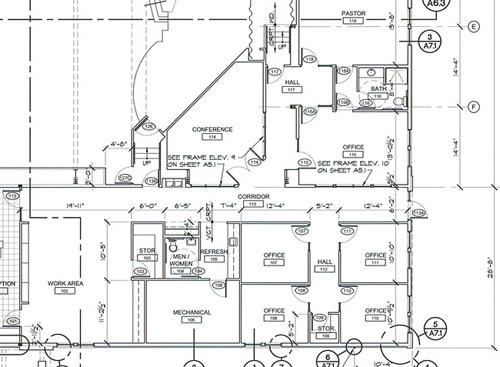As Built Drawings PDF or DWG
The final As Built drawings have always been a critical part of an O&M Manual, and it has always been clear that these need to be the final version of the drawings, which by convention are marked as 'As Built'. But now that we are increasingly using digital manuals and choice of file format is important; should these drawings be provided as PDF files or DWG files?
We take the view that best practice on O&M manual's dictates that the manual should be maintained as a live and active document that can be modified to reflect changes that occur in the future, as well as being a fixed record of the work that was undertaken in the project. This does imply, however, that full DWG files need to be included in the manual so that they can be amended in the future. Clearly this can cut across the commercial interests of the architects and sub-contractors with many issues of copyright and liability that should ideally be clarified as part of the initial contract.
PDF file format: The advantage is that they have a relatively small file size, the PDF reader is readily available which most people already have on their computer, and it is quite accurate. The Disadvantage is that they cannot be updated.
DWG file format: The advantage is that they provide the starting point for any competent CAD drawing operator who wants to make modifications to the drawings in the future. Note: we include a FREE DWG viewer with our O and M manuals which is made available from Brava. Click here to download. (http://infograph.com/products/dwgviewer/DWGdownload1.asp ).
The main disadvantage is that some architects and M&E contractors do not like providing the DWG files because it may require them to undertake significant work in stripping out hidden layers that might contain information that is proprietary to them. It is also possible that leaving these hidden layers in place would leave them at increased risk of a legal challenge at some point in the future.
My preference would always be to provide both PDF and DWG files to the client. In reality this is a subject that should be discussed with sub-contractors at the beginning of a project and should be considered as one of the standard terms of the contract.





 ShareThis
ShareThis